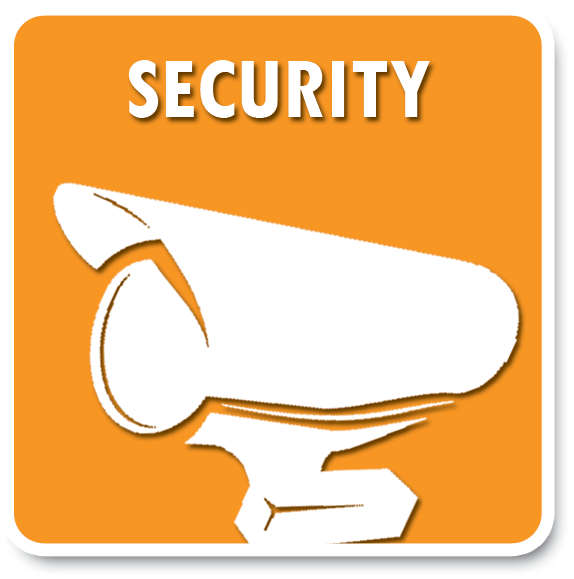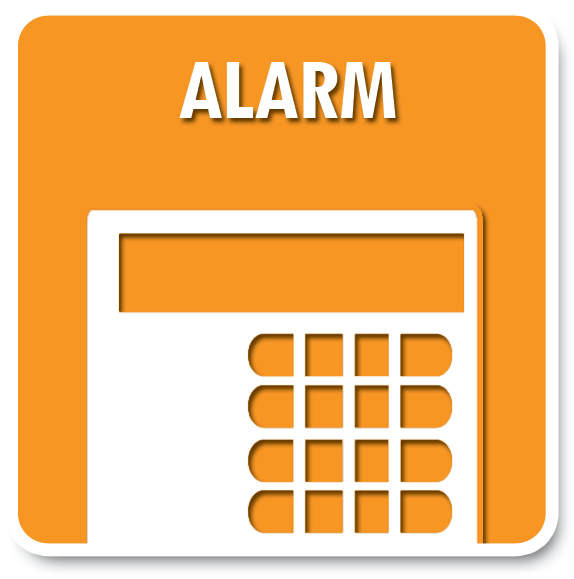CCTV Buyer's Guide
SURVEILLANCE CAMERA BUYERS GUIDE
Technology has advanced significantly over the past 10 years event hough the concept of security cameras have not changed much other than the fact they have become richer in TVL (TVL TV Lines), cheaper, and smaller. What have changed significantly are the recorder units (DVR Digital Video Recorders). DVRs have become more sophisticated, feature full, and some models even allow us to remote view cameras from anywhere in the world with a high speed internet connection. This guide will help you read camera specifications and understand their effect on the performance of the camera. Camera resolution or picture quality is measured by the number of horizontal lines the chip in the camera provides. It is called TV lines of resolution or TVL. The higher the TVL are, the better the quality of the image. Standard image quality is 380TVL to 420TVL. High image quality is 420TVL to 480TVL. Very high image quality is 480TVL to 570TVL.
Consumers shopping for DVRs and/or Cameras get confused with all the different varieties out there, and what makes them different from each other. That's why we would like to breakdown some of these technical specifications so we can help you select the best possible and most economical type of video surveillance equipment for your application, just don't hesitate to call our knowledgeable staff at 602-248-8477 for expert advice.
Recording Equipment
There are 2 main categories of recording equipment: PC-based DVRs and Standalone DVRs. PC-based DVRs are built around a PC running on Windows, Linux, or Mac operating system. In addition to the usual components that are used to build a PC, there is also a video capture card with 4, 8, 12, 16, 32, 48 or 64 camera inputs. The capture card receives analog video from the cameras and converts it to a digital signal. It then compresses that digital signal and stores it on the hard disk drive for archiving and playback. The DVR software also provides live view, remote access, camera control and other administrative functions. PC-based DVRs are easier to use, more feature-rich, and usually cost more money than standalone DVRs. You can also integrate IP or Megapixel Cameras to PC-Based Systems analog side with analog cameras. This particular system is called a hybrid system.
PC-Based DVRs
PC-Based systems have to be designed specific to the video capture card in order to work properly, that explains why you couldn't use the video capture card on any personal computer. Hang-ups and system instabilities that consumers (end users) are faced with can be inevitable when not taking this into consideration. So please folks let the experts specifically design the PC-Based system for rather than using your existing personal computer.
Our PC-based DVR systems are custom built using name brand components like Intel. The surveillance system you get from Phoenix Cams comes preconfigured, Plug-N-Play and ready to go so the only thing you need to do is run the cable and connect the cameras to the DVR. After that, you are ready to go. We warranty our DVRs for one year for parts and labor.
Standalone DVRs
Standalone DVRs are usually run on a Linux Platform or other proprietary operating system that is designed to run only one application. Standalone DVRs are not as feature-rich as their PC-based counterpart, but are a good choice for clients who would rather use VCR-Like controls rather than a keyboard/mouse and are more cost-effective. The embedded DVR software provides live view, remote access, camera control and other administrative functions. However some of the entry level standalone DVRs may not offer remote access.
Software Motion Detection
Motion detection is built in the DVR software and not a function of the cameras. DVR software analyzes the video frames (change in pixels) coming from the camera frame by frame and when it detects a change in the frame or movement it will trigger recording. Some DVRs offer pre and post recording which means it can record before and after movement commences. The sensitivity of motion detection can be adjusted to eliminate false triggers. The more sophisticated DVRs allow the user to define areas where motion can be ignored, such as ignoring the movement of moving branches on a tree. Other advanced features are available such as object left behind and missing object detection. These types of features are called analytics and are usually only available with a PC-Based system.
Cameras & Lenses
We all describe the most popular types of available security cameras as simple as we can in this short guide. We will focus more on popular and widely used camera types instead. Decent quality CCTV cameras use CCD technology. The size of the CCD chip is normally 1/4", 1/3" or 1/2". The most popular size is 1/3” and you don’t see many cameras with 1/2” anymore other than the Hi-Def Cameras, like the Megapixel Cameras. Most cameras have a built-in 3.6mm lens which provides roughly a 72 degree field of view. Some cameras come with a varifocal lens, so the focal length can be adjusted.
Some of the more popular security camera types are dome cameras which are not as obtrusive and usually blend into surroundings, especially with drop down ceilings. They are great for use in stores, lobbies and other public places. Infrared cameras have become very popular in recent years. They can see in total darkness using their IR illuminators. Also certain dome cameras have lenses that interchangeable.
The traditional CCTV security camera has a bulky style and is often referred to as a full body camera or box camera. They are usually sold without a lens, which gives you the advantage of being able to choose the exact lens for application.
Pan/Tilt/Zoom (PTZ)cameras are relatively expensive, but have gone down in price drastically and typically designed for special uses such as large coverage areas that need to be scanned or monitored by an operator because it's not economical for multiple cameras. PTZ cameras can pan, tilt and provide optical zoom and are best suited when an operator is available to actively manipulate/move the PTZ camera.
Spy Camerasare designed for covert applications.
Wired Security Camerasare the optimal choice, as they provide the best video quality, zero interference, and are cost effective.
Wireless Cameras should be only taking into consideration if there is no way of running cable from the camera to the DVR, so wireless media is used instead. Nevertheless the power to the camera is not wireless and needs to be hard-wired to the camera.




